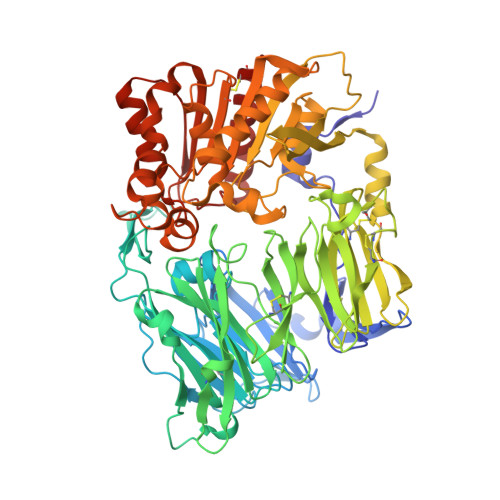Discovery of Novel Tricyclic Heterocycles as Potent and Selective DPP-4 Inhibitors for the Treatment of Type 2 Diabetes.
Wu, W.L., Hao, J., Domalski, M., Burnett, D.A., Pissarnitski, D., Zhao, Z., Stamford, A., Scapin, G., Gao, Y.D., Soriano, A., Kelly, T.M., Yao, Z., Powles, M.A., Chen, S., Mei, H., Hwa, J.(2016) ACS Med Chem Lett 7: 498-501
- PubMed: 27190600
- DOI: https://doi.org/10.1021/acsmedchemlett.6b00027
- Primary Citation of Related Structures:
5I7U - PubMed Abstract:
In our efforts to develop second generation DPP-4 inhibitors, we endeavored to identify distinct structures with long-acting (once weekly) potential. Taking advantage of X-ray cocrystal structures of sitagliptin and other DPP-4 inhibitors, such as alogliptin and linagliptin bound to DPP-4, and aided by molecular modeling, we designed several series of heterocyclic compounds as initial targets. During their synthesis, an unexpected chemical transformation provided a novel tricyclic scaffold that was beyond our original design. Capitalizing on this serendipitous discovery, we have elaborated this scaffold into a very potent and selective DPP-4 inhibitor lead series, as highlighted by compound 17c.
Organizational Affiliation:
Department of Lead Optimization Chemistry, Department of Structural Chemistry, Department of Pharmacology, and Department of Pharmacokinetics, Pharmacodynamics, and Drug Metabolism, Merck Research Laboratories , 2015 Galloping Hill Road, Kenilworth, New Jersey 07033, United States.


















